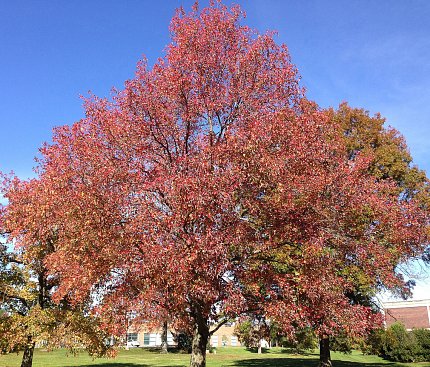Have a question about some aspect of working at NIH? Use our feedback form to post an anonymous query, and we'll try to provide an answer.

Photo: Famartin/Wikimedia
Feedback:
Response from the Office of Research Facilities: Thank you for your interest and concern for the health of our campus tree canopy. ORF takes a lot of pride in maintaining our tree-lined roadways and pathways for everyone’s enjoyment. Our 1:1 NIH tree replacement policy stipulates that for every tree that perishes or is otherwise removed, it is replaced with a new nursery-grown tree.
Along with each newly planted tree, NIH receives a 1-year warranty from the contractor on the health of the tree. If the tree does not survive a full year (including one winter season) it is replaced by warranty at no cost to NIH.
Much of the tree-planting activities in “difficult to establish” spots on campus are actually warranty replacements and not new tree purchases. No new tree plantings have occurred in the area northwest of Bldg. 10 since 2015, so it is likely that any more recent tree-planting activity witnessed in this area was due to warranty replacements.
There are many reasons why trees die, and when they do there are often a number of contributing factors. It is true that winter snow-melt salts can adversely affect the health of some species of trees that are sensitive to either elevated soil salinity and/or salt spray from passing vehicles. ORF continues to evaluate performance of tree species on campus subject to a variety of environmental conditions to guide future tree-planting strategies.
The ORF landscape architect tracks the warranties of all new trees and makes adjustments to species that do not thrive, with an emphasis on selecting mid-Atlantic native tree species for new plantings. Last year, the failing London Plane trees on the north side of North Dr. were replaced with thornless honeylocusts (Gleditsia triacanthos var. inermis ‘Skyline’). This coming year, seedless American sweetgum trees (Liquidambar styraciflua ‘Rotundiloba’) will be planted along the south edge of Wilson Dr. where scarlet oaks were unsuccessful in establishing.
